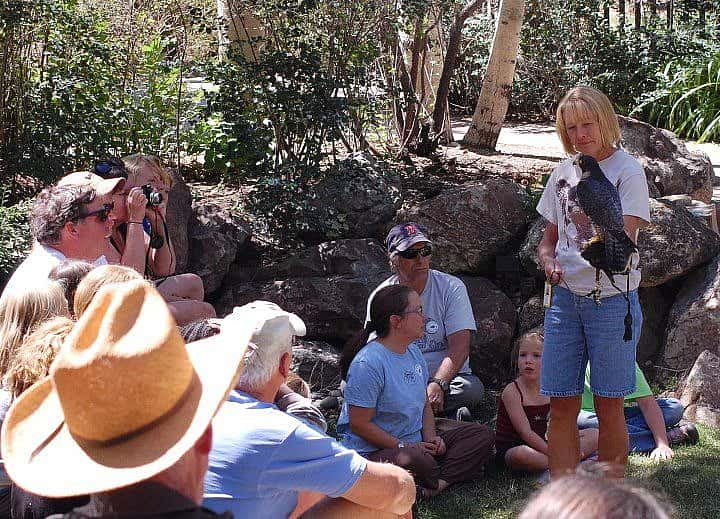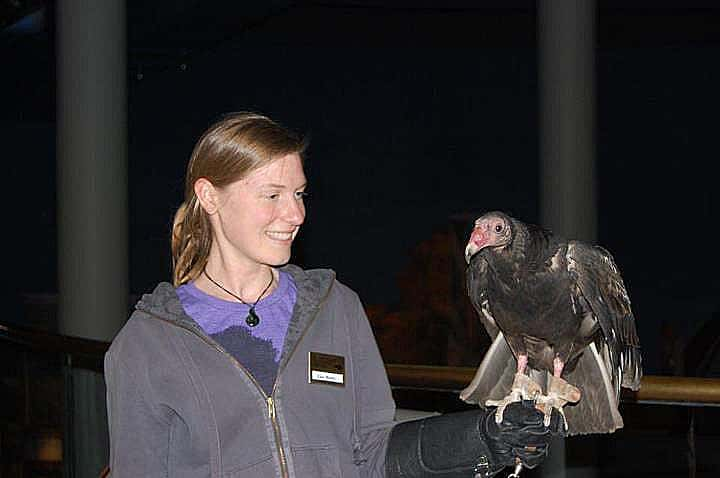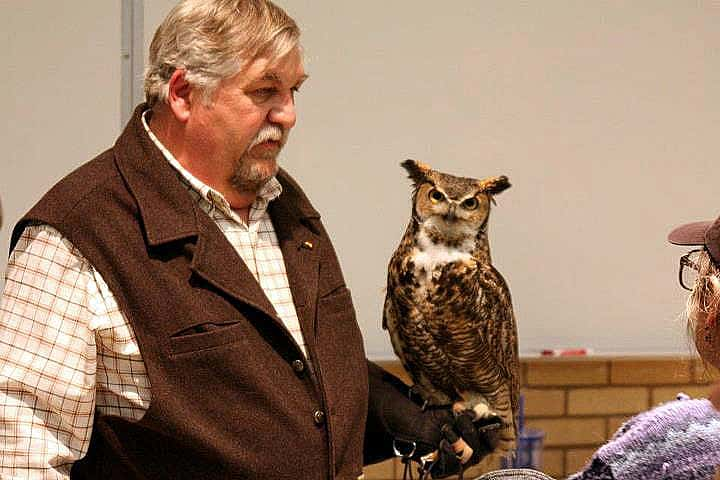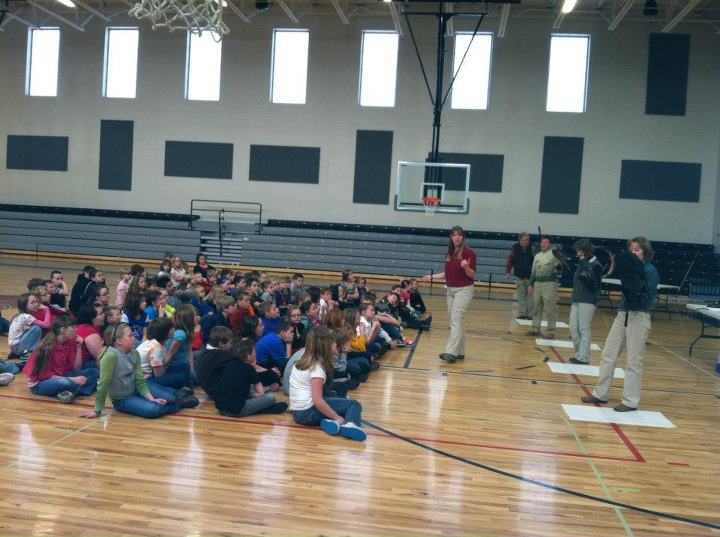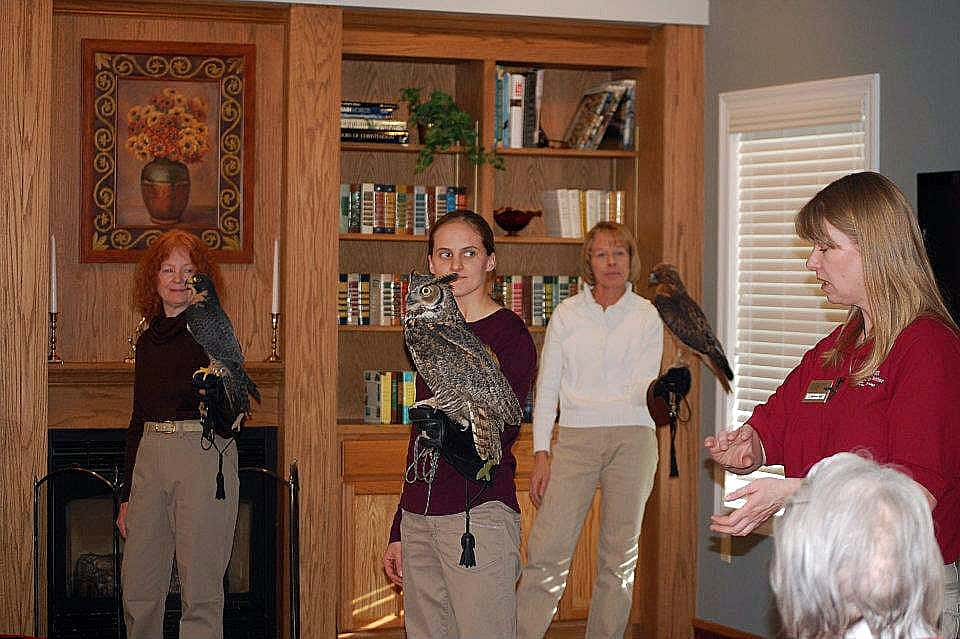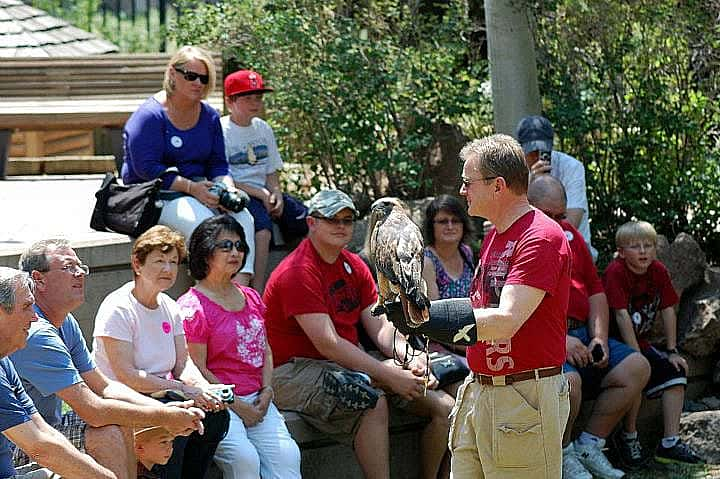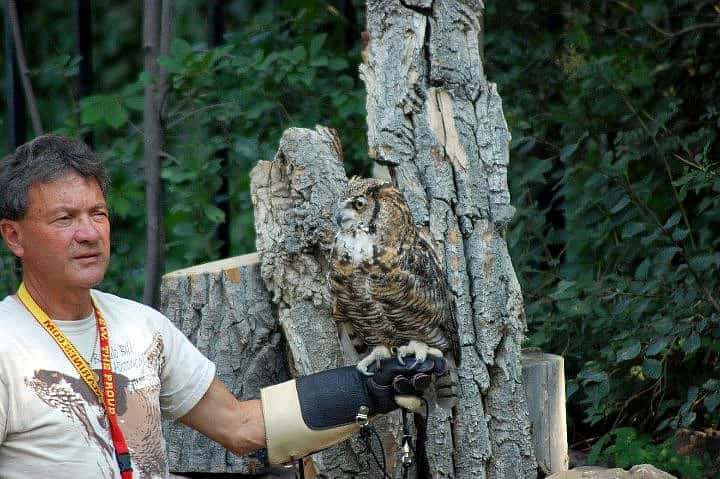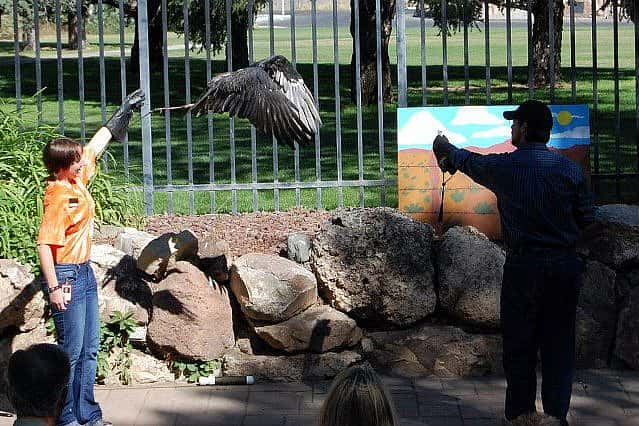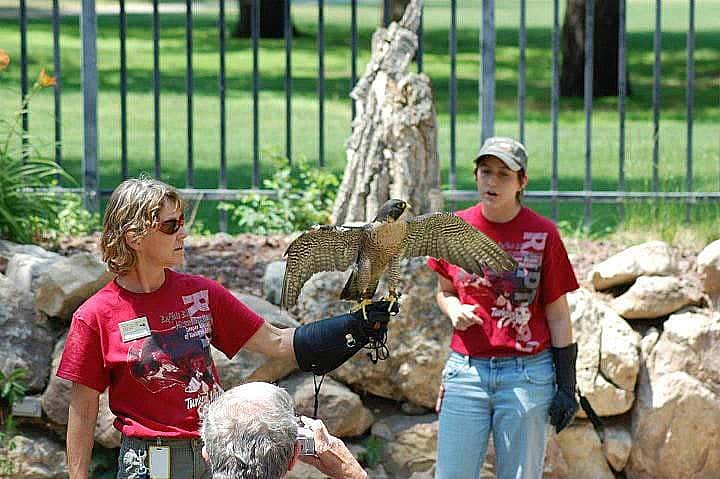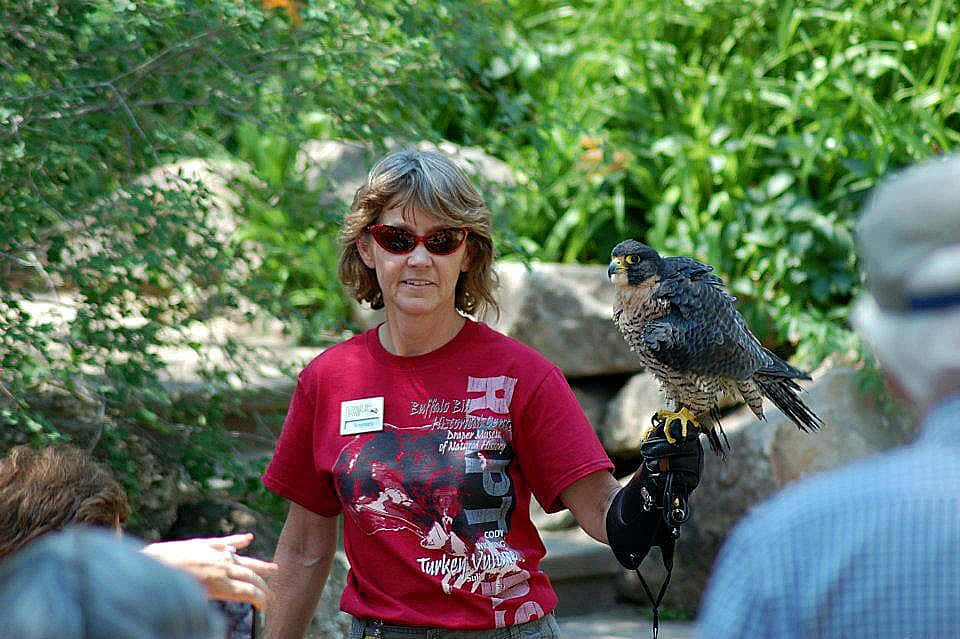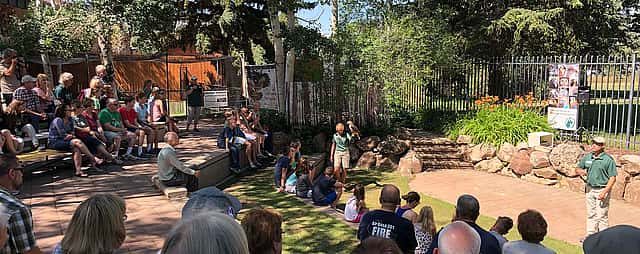
Why Does the Center Have Live Birds?
The Buffalo Bill Center of the West offers our visitors collections and educational programs designed to stimulate people’s interest and help them gain new knowledge. As part of this mission, the Draper Natural History Museum wants to connect its visitors with nature, and help the public to both appreciate and gain a better understanding of the ecology of the Yellowstone area. Having live animals at the Center helps make that connection with most people and enhances the overall museum experience. People often see raptors and vultures in nature, in documentaries, and on web cams. Because of this, raptors are animals that many people are interested in, and therefore our visitors enjoy the opportunity to see these birds up close, which is something that doesn’t happen often in the wild.
The Draper Museum Raptor Experience features twice daily summer programs and outreach programs and events for both adults and children year round. During non-program times we may carry one or more of our birds into the museum to give visitors a chance to see the birds and ask questions.
For special in-house and outreach programs, Melissa Hill will design her presentations to fit the audience, so that a group of children will have a different program than a group of adults. It is especially important with children to tell the fun facts about the birds, and make the program as entertaining and interactive as possible. Adult groups such as the Audubon will, of course, also enjoy the fun facts, but they may also be more interested in other facets of bird behavior and the importance of wild raptors as an indicator species for the larger environmental picture.
Each bird has interesting and fun facts about them that both young and old find entertaining. Red-tailed hawks will kill and eat rattlesnakes. Sound dangerous? They have a method worked out that is quite effective. Spreading their wings wide, and moving toward the snakes, the flutter of the wings is what grabs the attention of the rattlesnake. It is the moving wings that the snake perceives as the danger, when actually the danger is in the talons and the sharp beak. With the snake distracted by the wings, the hawk can lung at the snake, using a foot to grab the snake by the head. One quick bite to the snake’s skull, and its all over.
Great-horned owls have a favorite food that always surprises our audiences. How about a nice juicy skunk? Yummy! What? They stink? Yes, for us it would be unthinkable, but owls can not smell them, so as far as they are concerned, skunks are just a tasty meal. Of course living with us Teasdale doesn’t dine on skunk. He may not smell them, but we certainly would!
Peregrine falcons are the fastest animal on the planet. I am sure many of you thought it was the cheetah, but a peregrine can dive at its prey at over 200 mph. One research bird has been clocked at 242 miles per hour. No animal can compete with that!
Suli, the turkey vulture, gets an “ewwww” response when people learn that she urinates down her legs. But really this is just one way that vultures clean themselves. The acid in their urates kills bacteria that may be on their legs. It’s also a way they can cool themselves on hot days. Basically, it’s their equivalent of sweating.
In our 2012 summer program we wanted to not only entertain our guests, but also help them to have a better understanding of how important these birds are to people. A red-tailed hawk is a great help to us as a pest controller. These birds eat many different types of animals, some of which are mammals such as mice and voles. These animals can be a problem for farmers, and we all know we don’t want mice in our homes or barns. Billions of dollars are spent each year on pesticides, and pesticides can have other negative side-effects on our environment. Our red-tailed hawk, Isham can eat three or four mice a day, which adds up to around 1,400 mice a year. In the wild, with an average lifespan of 15 years, and the fact that for every female that is eaten no more baby mice or voles are born, a red-tailed hawk could eliminate several million pests.
If red-tailed hawks are the daytime pest controllers, then great horned owls take over the night shift. These birds also eat a wide variety of animals, including a lot of pest animals.
Suli is the clean-up crew. Being a carrion eater, vultures dine on the dead animals they find. Think of all the dead animals you see along our highways. Some estimates suggest that nearly 300 million wild animals are killed along North American roads each year. Add this in with animals that have died elsewhere, and there is a lot of cleaning-up to be done. Dead animals will not only smell terrible, but will be swarming with maggots. Not a pleasant thought. Wouldn’t you rather see a vulture consuming it for us? Vultures also help to stop the spread of diseases. They have strong acids in their stomachs which allow them to consume animals that have died of such things as anthrax, cholera, and botulism, without getting sick themselves. These diseases are sterilized within their bodies, and the disease stops there.
Peregrine falcons are amazing birds that are loved by falconers, as their fast dives are spectacular to watch. But it isn’t only falconers who love them. Peregrine falcons are also very popular in many large cities. Falcons nest on tall cliffs, and because of this desire to nest on high places, they also have taken to nesting on the window ledges of sky-scrapers. Check out the web, and you will find cities that have built nesting boxes and installed web-cams so that people all over the world can watch falcons nesting. And why do people in cities appreciate them so much? Birds are one of a peregrine falcons favorite foods. And what birds cause problems in large cities? Pigeons, which make a perfect meal for a peregrine falcon.
Question from visitors:
Do Peregrine Falcons mate for life?
Yes, but a peregrine can have a very short life. According to the book, Peregrine Falcon Stories of the Blue Meanie by Jim Enderson, peregrines may mate for life, but life is often short, so they will replace a missing mate as soon as possible. Enderson relates this story: “In one historical case, an adult disappeared. Another peregrine replaced it in a day or two. Before long, the other adult was lost; it was also replaced. The new pair ended up rearing the orphaned young of the original birds.” Obviously they don’t mourn for a minute.
Written By
Anne Hay
Anne Hay has a Bachelor's degree in Elementary Education and a Master's in Computers in Education. She spent most of her working years teaching third grade at Livingston School in Cody, Wyoming. After retiring she began doing a variety of volunteer work for the Buffalo Bill Center of the West’s Draper Natural History Museum. Anne loves nature and has a concern for the environment. She believes that educating the public, so that they will have a better understanding and appreciation for the natural world, is very important. Because of this belief, volunteering at the Center is a perfect fit. She spends time in the Draper Lab, observing eagle nests for Dr. Charles Preston’s long-term research project on nesting golden eagles, writing observation reports of raptor sightings in the Bighorn Basin, and working with the Draper Museum Raptor Experience. Anne states that, “Having a bird on my glove, is one of my all time favorite things in life.”
